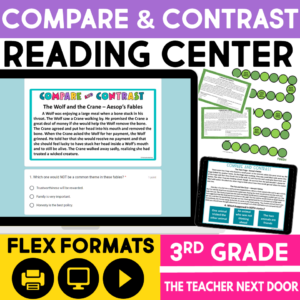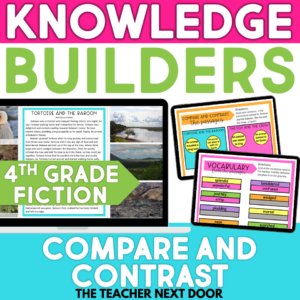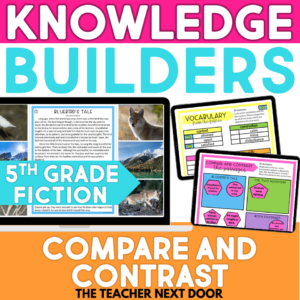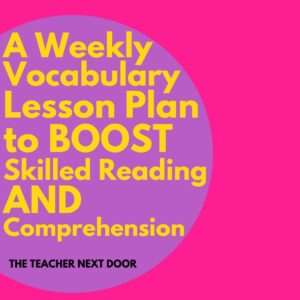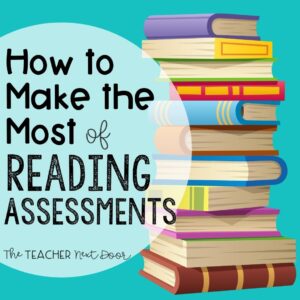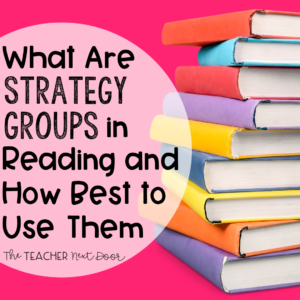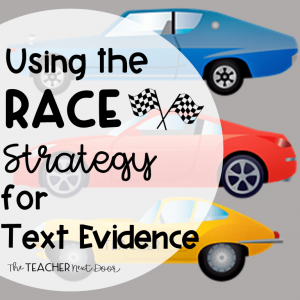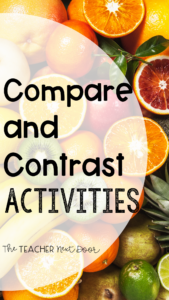
Teaching students to compare and contrast is a lot of fun for me!
Unlike theme or the main idea, which can be tricky, students seem to grasp comparing and contrasting much more easily.
Maybe it’s because this is a skill they use in their everyday life. For example, each day, they quickly compare and contrast menu items in the cafeteria, video games to play, books to read, and favorite sports to play.
The challenge, then, is to take that skill that students use quite often and help them understand how to apply it to a piece of literature or informational text.
Here are a few activities I like to use to help students master comparing and contrasting in reading:
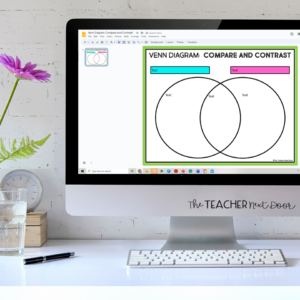
1. Venn Diagram
The Venn diagram is the tried and true tool that teachers utilize when students are asked to compare and contrast. It’s a great tool, and there’s a reason it is used so much!
Here are two ways that you might also use a Venn diagram:
A. When you want a larger, more visual Venn diagram, you can make one on the ground using hula hoops.
Students can add differences and similarities by writing them on index cards or small pieces of paper. I really love to use this when small groups are working on comparing two characters from the same book (like Auggie and Via Pullman from Wonder) or comparing two different books (like Hatchet and The Sign of the Beaver).
After groups are finished, I like to have kids move around the room, from Venn diagram to Venn diagram, to see what other students were thinking and how their Venn diagrams were similar or different.
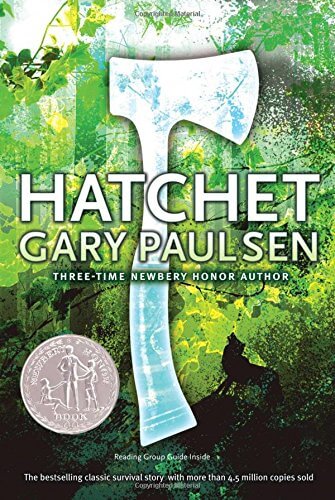
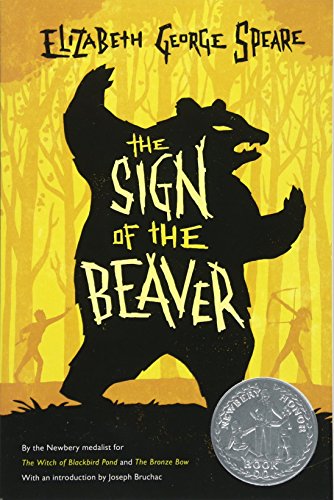
B. Another Venn diagram activity that I love is from Miss DeCarbo. She sets Venn diagrams around the room with small pictures on the top, which show what students are comparing.
In the upper elementary grades, reading skills are usually strong enough that pictures aren’t really needed, but I still think they provide a nice visual and may jog a few extra ideas out of your kids!
As pairs walk around the room, they stop at each Venn diagram and write a similarity between the two objects, animals, people, or places and a difference. By the end of the activity, each Venn diagram should be completely filled, and students have had the opportunity to do lots of comparing and contrasting.
2. Class Graphs
On the first week of school, I do a getting to know you activity where kids choose a topic (I make sure each topic is unique) and walk around asking each other which type of sport, which season, pizza topping, school subject, rainforest animal, or book is his/her favorite. Once they tally the results and make a colorful graph, I put them on a bulletin board called Class Favorites.
Not only is this a great icebreaker (kids learn a few names of new classmates) and math activity, but it is also good compare-and-contrast practice. I ask students to make three observations from their graph, and this is where they compare and contrast to complete the assignment. We do this again at the end of the year with ice cream flavors. Click here if you’d like the FREE set of Ice Cream Graphing Materials.
3. Compare and Contrast Cards
For a beginning activity, make small cards with two items on each card that are similar but also different. The cards could have two different foods (like hamburgers and hot dogs), two different animals (like a hippo and a rhino), two different jobs (like a doctor and a teacher) or two different sports (like baseball and football).
Place several of these in small baggies (one baggie for each pair), and students pull a card and compare and contrast each set. This could be done verbally, on paper, on whiteboards, or in a reader’s notebook.
Once students are comfortable comparing and contrasting ordinary things, you’ll want to move them into applying this skill to reading. One idea is to do a similar activity once a read-aloud, literature circle, class novel, or even a basal story has been read by the whole class.
This time, the cards will have items like settings in one book or settings from two different books, specific events in a story, characters in the same book or characters from two different books, and themes. I prepare baggies with the same cards for each set of pairs.
Even though I am asking them to compare a number of things, I only ask them to record one set of observations. Sometimes I tell students which set to choose, and sometimes I let them decide.
Before I have students do this in pairs or small groups of three, I do like to model the process together. I may read two of my favorite compare and contrast books on two different days: Oliver Button is a Sissy by Tomie dePaola and Amazing Grace by Mary Hoffman.
Once all students are familiar with the books, we go through a few of the possible categories to compare and contrast together. These stories are really good for settings, character traits, themes, and events. Plus, I just really like the themes in these books, which is to be yourself and to accept others for who they are.
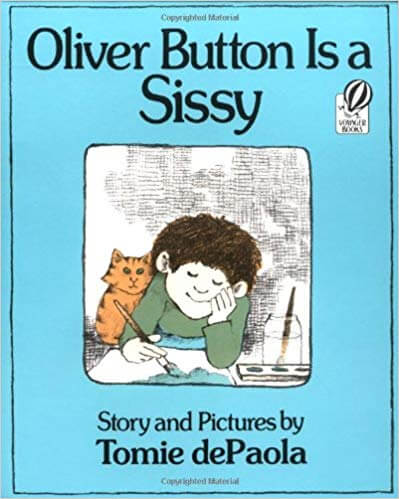
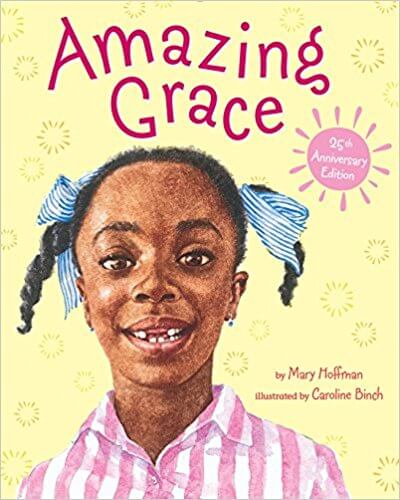
4. Use a Table Graphic Organizer
Besides Venn diagrams, I think tables are one of the best ways to record comparisons. One thing I like about this, besides being a different way to record similarities and differences from Venn diagrams, is that students do need to know how to read and use a variety of text features, and by using a table, it is helping students become more familiar with how a table works.
What to compare using a table format?
1. Objects, Animals, People, Places
2. Buddy Class Friends, Classmates, The Classroom Teacher, and the PE or Music Teacher (if you have one)
3. Two Characters – from the same book or different books
4. Two Settings – from the same book or different books
5. Two Events – from the same book or different books
6. Themes – from two different books
7. The Book and the Movie
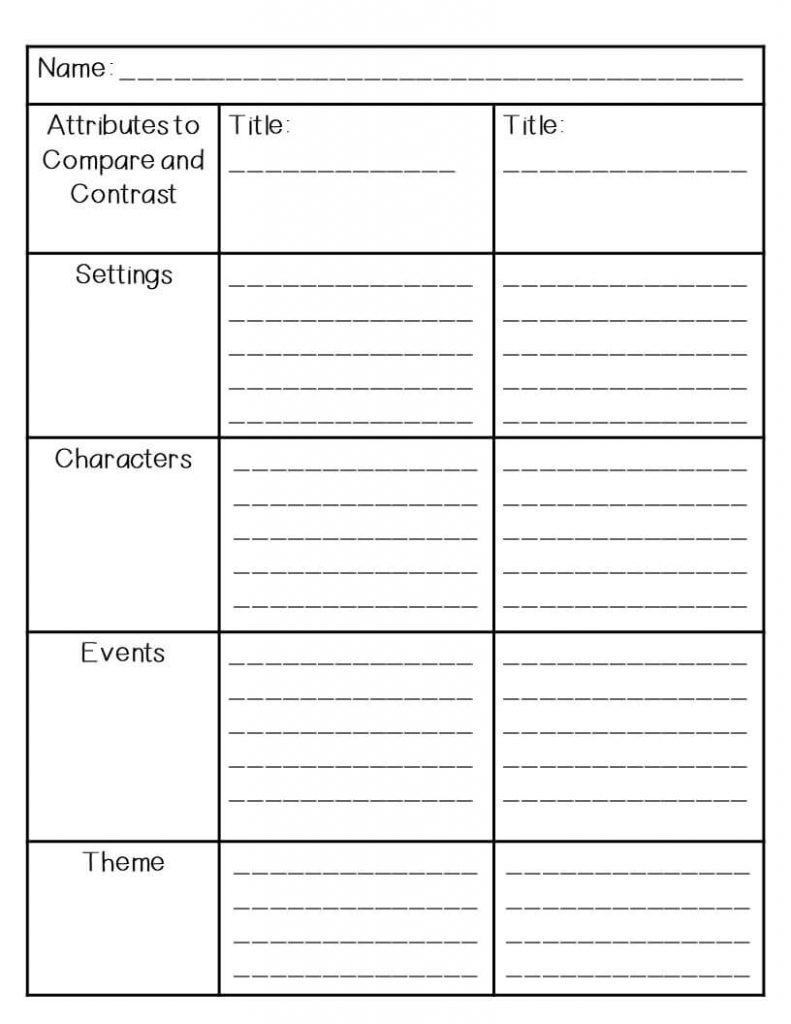
5. Using Task Cards and Games
I do like to use task cards with every concept I teach. I love them, and so do my students. They tend to see this format as fun, and adding a board game or a class scavenger hunt adds to their enjoyment.
For compare and contrast, I especially like task cards because they give students an opportunity to practice with shorter texts. This focused practice can help increase their skill and their confidence for the more difficult, lengthier texts to come.
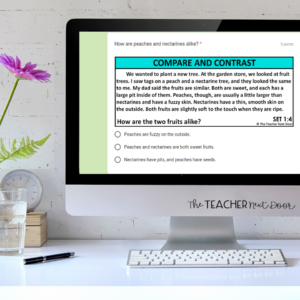
6. Scaffold Learning by Using Passages, Short Stories, and Then Books
Like anything we do in the classroom, helping students advance in a skill can be done step by step with lots of direction and support at first. As students progress, they become more independent workers who are able to apply the skills learned and to finish tasks on their own.
Once students have mastered the skill, we’ll want to revisit it every now and then throughout the year. This spiraling doesn’t have to be time-consuming but can be as simple as an occasional question we ask after reading a book together.
Compare and Contrast Reading Center Fiction for 3rd Grade
Compare and Contrast Nonfiction Reading Center for 3rd Grade
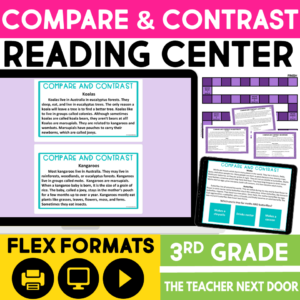
I also have created two for 4th/5th grades.
Click here to see the Fiction Game and here for the Nonfiction Compare and Contrast Firsthand and Secondhand Accounts Game.
One of my favorite units for 3rd – 5th grades comes in both print AND digital and includes lots of paired texts with folktales, fables, and myths.
Click here to see the Compare and Contrast Unit.
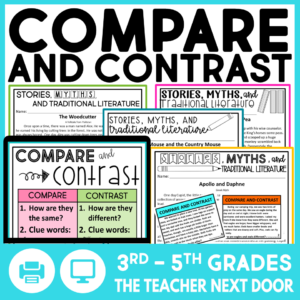
Looking for Digital Reading units that work in Google Slides or PowerPoint?
Want more compare and contrast ideas? Here’s another post called 6 Tips to Teach Compare and Contrast.
Thanks so much for stopping by!


